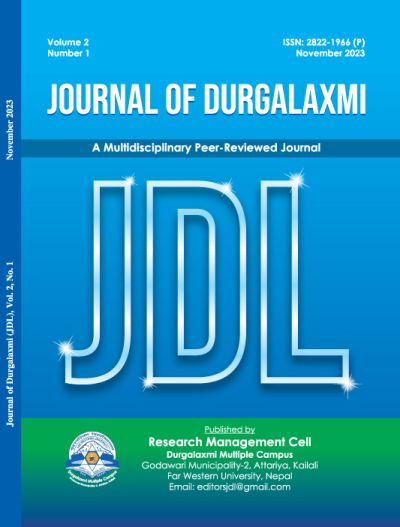Hegemony of English Language: An Analysis of Advertisement Strategies Adopted by Private Schools of Nepal
DOI:
https://doi.org/10.3126/jdl.v2i1.65398Keywords:
hegemony, domination, linguistic discourse, pictorial discourse, advertisement strategies, ideologyAbstract
Using Fairclough's (1992) three-dimensional framework (i.e., discourse, text, and social practice), this paper critically examines the linguistic and pictorial discourse of private school advertisement strategies, particularly those for new admissions initiatives, to better understand how the English language functions and how it predominates Nepali and other languages in the context of Nepal. The pictures of advertising in English for 'new admission open' published by private schools were collected as research data and, then, critically analyzed the pictorial and linguistic discourse represented by them. This critical discourse analysis reveals that although Nepalese language policy in education prioritizes multilingual education, all private schools solely offer instruction in English as a second language. Most parents and children are drawn to English-speaking schools due to the influence of the language and the appealing marketing tactics utilized by private schools. Language prejudice and racial inequity are brought about by the idea that English is a superior language. The idea that English is a better language generates prejudice towards other languages and social injustice and the identity of Nepali and other local languages is being undermined by the dominance of English in schools.
Downloads
Downloads
Published
How to Cite
Issue
Section
License
Copyright (c) 2023 The Author(s)

This work is licensed under a Creative Commons Attribution-NonCommercial 4.0 International License.
CC BY-NC: This license allows reusers to distribute, remix, adapt, and build upon the material in any medium or format for noncommercial purposes only, and only so long as attribution is given to the creator.




